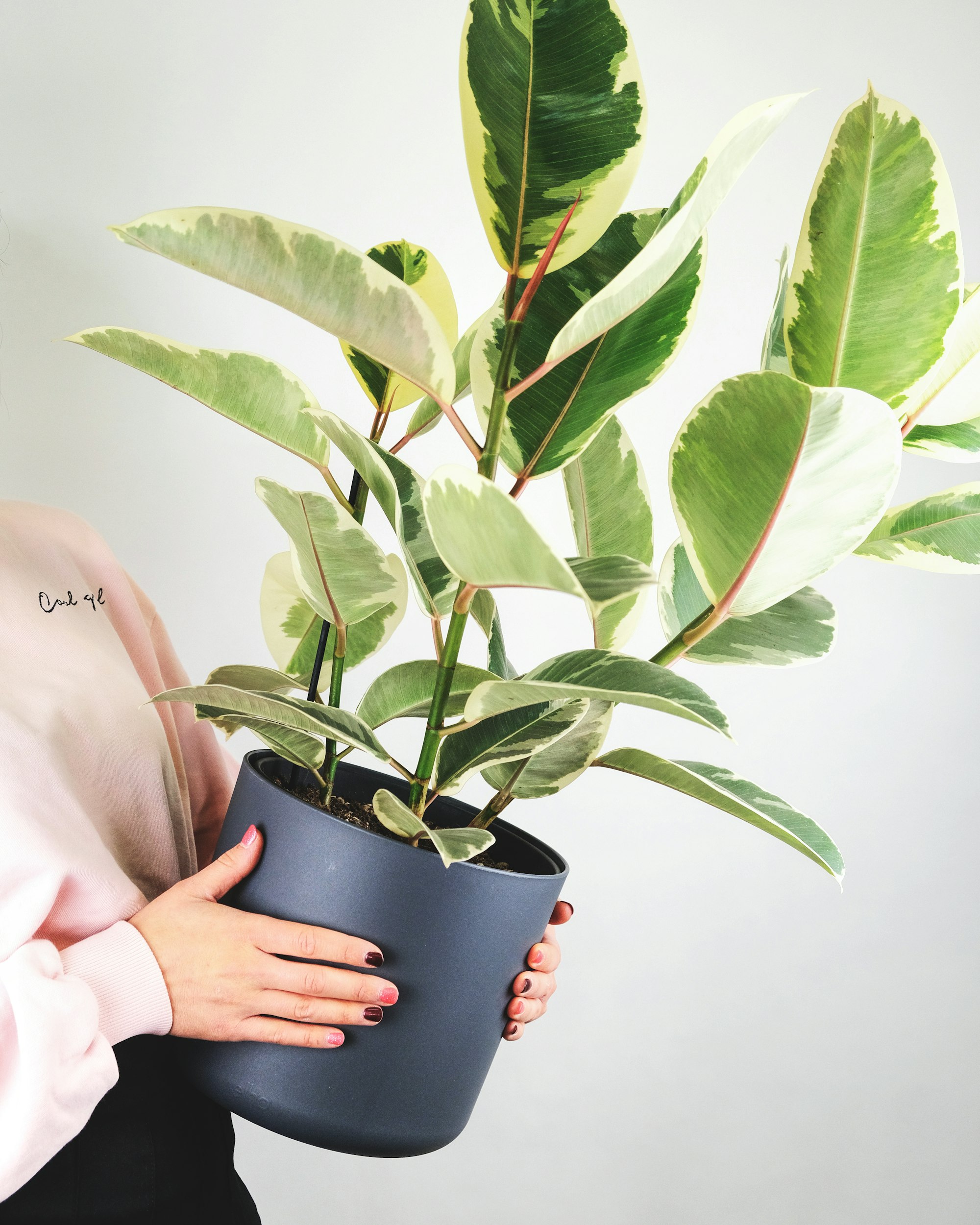How to Grow Ficus Elastica
Ficus elastica, commonly known as the rubber plant, is a popular and easy-to-grow houseplant native to the tropics of Southeast Asia.

Table of Contents
Its rich emerald, oval-shaped leaves and the ability to reach up to 100 feet in its natural habitat add lush greenery to your indoor space.
If you want to grow your own Ficus elastica, you'll be glad to know that it thrives well in containers and can be easily maintained with the proper care.
Following the essential growing tips, such as providing adequate sunlight, proper soil, and appropriate watering, you'll enjoy a healthy and robust rubber plant in no time.
About Ficus Elastica
Ficus elastica, also known as the rubber plant, rubber tree, or rubber fig, is an evergreen shrub belonging to the Moraceae family.
Originating from the tropics of Southeast Asia, this ornamental indoor plant is renowned for its large, oval-shaped leaves with a rich emerald hue and waxy sheen.
As a popular houseplant, Ficus elastica thrives in containers, providing ongoing color and an intriguing focal point.
Growing it indoors is relatively simple and can be done following a proper growing guide, ensuring a healthy environment for this beautiful tropical plant.
Planting Ficus Elastica
To grow a Ficus elastica, select a pot with drainage holes to ensure proper drainage for your plant.
Use a well-draining soil mix, including peat moss, perlite, sand, and compost.
This combination will provide a suitable environment to promote healthy root growth and maintain the proper moisture.
When potting your Ficus elastica, be aware of the soil pH levels since it typically prefers slightly acidic soil.
Fill the pot with the potting mix and gently place the plant in the center, covering the roots with soil.
Remember to water your Ficus elastica thoroughly after planting, establishing a solid foundation for a healthy indoor houseplant.

Caring for Ficus Elastica Plant
Sun and Temperature
Ficus Elastica thrives in bright, diffused light and can tolerate soft morning sunlight. Protect it from harsh direct rays in the afternoon, as they can damage the leaves. Ideal temperatures for this plant range between 65-85°F (18-29°C).
Water and Humidity
Maintain a consistent moisture level for your Rubber Tree by watering when the top 1 inch (2.5 cm) of soil is dry. Aim for a humidity of 50% or more, which will help prevent issues such as brown spots on the leaves.
Soil and Fertilizer
Use a well-draining peat-based potting mix for your Ficus Elastica. Fertilize every two months with a balanced liquid fertilizer such as NPK 10-10-10 or 20-20-20 to promote healthy growth.
Repotting
Repot your Rubber Tree when its roots outgrow the current container, usually every 2-3 years. Choose a pot one size larger than the current one, and ensure it has drainage holes to prevent root rot due to overwatering.
Pruning and Propagation
Regularly prune your Ficus Elastica to maintain its shape and size, considering it can grow up to 100 feet tall in the wild.
For propagation, take stem cuttings with at least two leaf nodes and let them rest in a warm, humid area to encourage root development.
Troubleshooting Plant Problems
Growing Problems
If your Ficus Elastica is experiencing yellow leaves or leaf drop, it may be due to overwatering or a sudden temperature change.
Ensure proper drainage and maintain a consistent environment to prevent these issues. Leggy growth can result from insufficient light; try moving your plant to a brighter location with indirect sunlight.
If your rubber plant appears droopy or lacks new growth, it might need fertilizing.
Feed your plant with a balanced liquid fertilizer during the growing season and reduce feeding during its dormant period.
Pests and Diseases
Ficus Elastica can be susceptible to pests, such as scale insects, mealybugs, spider mites, thrips, and aphids.
Monitor your plant for signs of infestation, such as sticky residue or discolored leaves.
To combat these pests, use a solution like neem oil or insecticidal soap to keep them at bay.
Diseases like root rot can also affect your rubber plant. Prevent this by avoiding overwatering and maintaining proper drainage.
In case of a severe root rot issue, consider repotting your plant into fresh, well-draining soil and trimming any affected roots.
Conclusion
Growing Ficus elastica, or the Rubber Plant, can be a rewarding and exotic addition to your indoor plant collection.
To ensure its health and growth, place it in a location with bright indirect light, ideally from an eastern or western-facing window.
Provide a well-draining peat-based potting mix and maintain a temperature between 65 to 85°F (18-29°C) and a humidity level of 50% or more.
Fertilize every two months using a balanced liquid fertilizer with an NPK ratio of 10-10-10 or 20-20-20.
With the proper care, your Rubber Plant will thrive and bring beauty to your living space.
Frequently Asked Questions
What are the ideal light conditions for Ficus elastica?
Ficus elastica thrives in bright, indirect light, such as a southern or eastern exposure. Keep it several feet from the windows to avoid direct sunlight, which may cause leaf scorching.
How often should I water a rubber plant?
Water your rubber plant when the top inch of the soil feels dry, usually once a week. Avoid overwatering, which can cause root rot, and use a well-draining potting mix.
What is the proper way to propagate Ficus elastica?
To propagate Ficus elastica, take a stem cutting with at least two leaves. Dip the cut end in rooting hormone and plant it in a well-draining potting mix. Keep the cutting in a warm and humid environment until roots develop.
How to care for indoor Ficus elastica plants?
For healthy indoor Ficus elastica growth, maintain a temperature between 65 to 85°F (18-29°C) and humidity of 50% or more. Fertilize every two months using a balanced liquid fertilizer with NPK 10-10-10 or 20-20-20.
How can I encourage branching in my Ficus elastica?
Prune your Ficus elastica by cutting above a leaf node to encourage branching. This will promote the growth of new branches from the cut area. Prune during the growing season for best results.
Are there different varieties of Ficus elastica?
Yes, there are different varieties of Ficus elastica. The most common one is the Ficus elastica "Ruby," which has striking pink variegation on its leaves and is native to India and Malaysia.


